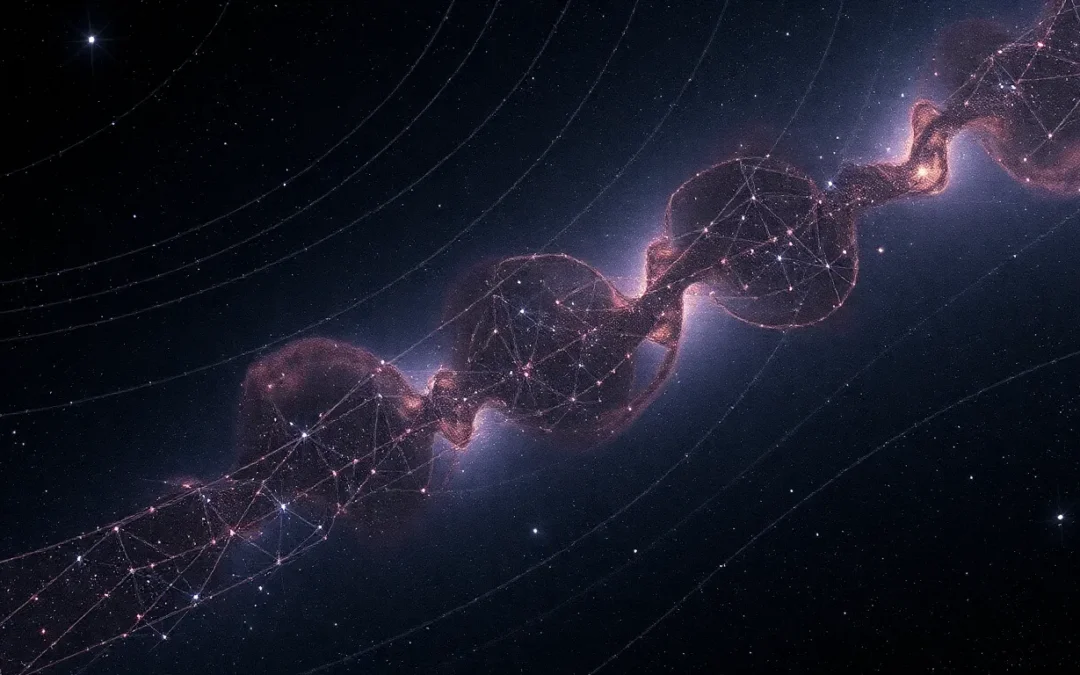[ez-toc]
Imagine gazing into the cosmic abyss, witnessing a celestial ballet unfold over billions of years. Imagine a scenario where Earth, our vibrant home, encounters a dramatic, transformative metamorphosis, its destiny intertwined with the life cycle of our Sun, a star not unlike countless others in the Milky Way. This captivating vision, a glimpse into Earth’s distant future, has been illuminated by the discovery of a remarkable planetary system, a cosmic mirror reflecting our planet’s potential fate. This distant system, known as KMT-2020-BLG-0414, harbors a planet orbiting a white dwarf, a stellar remnant, offering a compelling narrative of stellar evolution and its profound influence on planetary systems, including our own.
The discovery of this intriguing planetary system, located 4,000 light-years away, unveils a fascinating cosmic drama, a saga that speaks to the interconnectedness of celestial bodies and the relentless march of time. It’s not just a glimpse into the distant future of a distant world; it’s a reflection of Earth’s potential trajectory, a testament to the intricate dance between celestial bodies and the cosmic forces that shape their destinies. The discovery of KMT-2020-BLG-0414 is not just a scientific marvel; it’s a powerful narrative, an exploration of the cyclical nature of stars and their impact on the planets they nurture.
Unveiling the Cosmic Drama: A Glimpse into Earth’s Distant Future
The Dance of Stellar Evolution: A Stellar Saga
The tale of Earth’s distant future begins with a fundamental understanding of stellar evolution, the grand narrative of stars and their life cycles. Stars, like our Sun, are born in the tumultuous depths of interstellar clouds, collapsing under their own gravity, igniting a thermonuclear furnace that powers their brilliance. This process, known as nuclear fusion, releases tremendous amounts of energy, giving birth to the luminous stars we observe in the night sky. The Sun, a yellow dwarf star, has been diligently fusing hydrogen into helium for billions of years, powering life on Earth and radiating warmth that sustains our existence. But like all stars, our Sun is destined to undergo a dramatic transformation, a metamorphosis that will profoundly affect the fate of our planet.
As our Sun ages, it will exhaust its fuel supply, its core will contract, and its outer layers will expand, transitioning into a red giant star. This dramatic transformation, billions of years in the making, will engulf Mercury and Venus, potentially rendering them uninhabitable. The Sun, having transitioned into a red giant, will be a colossal celestial behemoth, its outer layers expanding to encompass Earth’s current orbit. If Earth survives this fiery ordeal, it may migrate to a more distant orbit as the Sun loses mass during this transformative phase. Eventually, the Sun will shed its outer layers, contracting into a white dwarf, a dense, hot remnant of its former glory. This celestial metamorphosis, a testament to the cycle of stellar evolution, is a cosmic ballet unfolding over eons.
This tale of stellar evolution is not merely an academic exercise; it’s a profound reminder of the interconnectedness of celestial bodies, of the delicate balance that dictates the fate of planets. It’s a narrative of change, of transformation, of cosmic forces at play. The discovery of KMT-2020-BLG-0414 allows us to peer into the distant future, to witness the grand spectacle of stellar evolution in action, and to ponder the potential fate of our own planet.
A Glimpse into Earth’s Potential Fate
The KMT-2020-BLG-0414 planetary system, with its Earth-sized planet orbiting a white dwarf, provides a glimpse into Earth’s potential future, a scenario that unfolds billions of years hence. This distant world, a testament to the resilience of planetary systems, offers a tantalizing hint of Earth’s potential fate, suggesting that even after the Sun’s fiery transformation, life might find a way to endure. The KMT-2020-BLG-0414 system, with its unique configuration, serves as a cosmic mirror, reflecting the possibilities of planetary survival and the challenges that lie ahead for our planet.
The planet orbiting the white dwarf in the KMT-2020-BLG-0414 system, a world roughly 1.9 times the mass of Earth, resides at a distance of 1-2 astronomical units from its host star, a distance roughly twice the separation between Earth and the Sun. This planetary system, discovered through the phenomenon of gravitational microlensing, where the gravitational field of a massive object temporarily bends and amplifies the light of a distant star, hints at the possibility of Earth’s survival after the Sun’s red giant phase. This intriguing scenario, a cosmic dance of survival, is a testament to the resilience of planetary systems and the enduring possibility of life persisting even under the most challenging circumstances.
However, the tale of Earth’s distant future is not without its challenges. Even if Earth survives the Sun’s fiery transformation, it will face a new set of obstacles. The runaway greenhouse effect, a phenomenon triggered by increasing atmospheric temperatures, will inevitably lead to the vaporization of Earth’s oceans, rendering the planet uninhabitable. This transformation, a testament to the delicate balance of our planet’s climate, is a grim reminder of the fragility of life and the precariousness of Earth’s environment. This scenario, a stark contrast to the hope offered by the KMT-2020-BLG-0414 system, is a reminder of the complex interplay of cosmic forces and the vulnerability of our planet.
The Unfolding Cosmic Symphony: Unanswered Questions and Enduring Mystery
The discovery of KMT-2020-BLG-0414 has sparked a flurry of scientific discussion and fueled speculation about the ultimate fate of our planet. However, many questions remain unanswered, leaving us with an enduring sense of mystery.
Will Earth escape the Sun’s fiery embrace during its red giant phase? The answer to this question is shrouded in uncertainty. Scientists are still debating the precise timing and extent of the Sun’s expansion, its potential impact on Earth’s orbit, and the likelihood of our planet’s survival. Some scientists believe Earth may migrate to a more distant orbit, a cosmic dance dictated by the Sun’s diminishing mass. Others speculate that Earth’s fate is sealed, its destiny intertwined with the fiery embrace of the Sun’s expanding outer layers. The ultimate fate of our planet, a delicate balance of celestial forces, remains a tantalizing enigma.
Even if Earth survives the Sun’s fiery transformation, will it remain habitable? The answer to this question is intertwined with the complex interplay of planetary climate and the runaway greenhouse effect. While Earth may persist after the Sun’s red giant phase, its ability to sustain life will be dictated by its changing environment. The relentless warming of Earth, fueled by the Sun’s evolution, could lead to a runaway greenhouse effect, vaporizing Earth’s oceans and extinguishing life as we know it. This cosmic drama, a delicate balance of planetary climate and stellar evolution, remains a source of scientific debate and speculation.
The discovery of KMT-2020-BLG-0414 is a remarkable testament to the progress of exoplanet research. Gravitational microlensing, the technique used to detect this distant system, has proven to be an invaluable tool for identifying planets orbiting distant stars. This method, a testament to the ingenuity of astronomers, will be further enhanced by the launch of NASA’s Nancy Grace Roman Telescope, scheduled for 2027. This new observatory, a beacon of scientific innovation, will utilize gravitational microlensing to discover new exoplanets, illuminating the vast expanse of our galaxy and unveiling the secrets of planetary systems far beyond our own.
The story of Earth’s distant future, as unveiled by the KMT-2020-BLG-0414 system, is a narrative of transformation, a cosmic dance of survival, and a reminder of the profound connection between our planet and the stars. The story of our planet’s destiny is still unfolding, a testament to the ever-evolving nature of the universe and the mysteries that continue to intrigue us.
We also Published
- Motion in One Dimension: Understanding the Basics of Physics
Explore the principles of physics through Motion in One Dimension. Learn the fundamentals and key concepts. - The Invention of Telescope: A Journey Through Time
Explore the fascinating history and impact of the invention of telescope, uncovering its journey through science and innovation. - Linear and Circular Motion : Understanding Basics
Explore the fundamentals of linear and circular motion, their differences, and real-world applications in physics and engineering.
The Cosmic Quest Continues: A Call to Curiosity and Exploration
As we gaze at the night sky, our hearts filled with awe and wonder, we contemplate the mysteries of the cosmos, the vastness of space, and the extraordinary story of our planet. The discovery of KMT-2020-BLG-0414 is not just a glimpse into Earth’s distant future; it’s a testament to the power of human curiosity and the relentless pursuit of knowledge. The universe, a realm of endless possibilities, beckons us to explore, to discover, and to unravel its intricate tapestry.
The quest for knowledge, the pursuit of understanding, is a timeless human endeavor, a drive that has propelled humanity forward through the ages. As we unravel the secrets of the universe, we discover not just the vastness of space, but also the depths of our own understanding. The discovery of KMT-2020-BLG-0414 is a reminder that the cosmos is a tapestry woven with countless threads, each thread a story waiting to be unraveled. It’s a testament to the enduring power of scientific inquiry, the unwavering spirit of exploration, and the boundless potential of the human mind.
The tale of Earth’s distant future, a cosmic narrative unfolding over eons, is a reminder of the profound connections that bind us to the stars. It’s a story of change, of transformation, of the universe’s relentless dance of creation and destruction. As we continue to explore the vast expanse of space, we embark on a journey of discovery, unveiling the secrets of the universe and our place within it. The story of Earth’s distant future, a tale still being written, is a testament to the wonder and mystery that lies at the heart of our universe.
“The universe is under no obligation to make sense to you.” – Neil deGrasse Tyson
RESOURCES
- BBC Earth | Environment, Climate Change, AI, Food …
- Deep Future: The Next 100000 Years of Life on Earth
- Distant Planet Orbiting ‘White Dwarf’ Hints At What Earth’s …
- Astronomers discover a possible ‘future earth …
- What can Earth tell us about exoplanets? – SEEC – NASA
- Frigid alien planet may offer a glimpse at Earth’s distant future
- Earth’s Future – Wiley Online Library – AGU Journals
- Strange evolution: The weird future of life on Earth
- Frigid alien planet may offer a glimpse at Earth’s distant future
- Frigid alien planet may offer a glimpse at Earth’s distant future
- Astronomers have detected what may be a ‘future Earth …







0 Comments